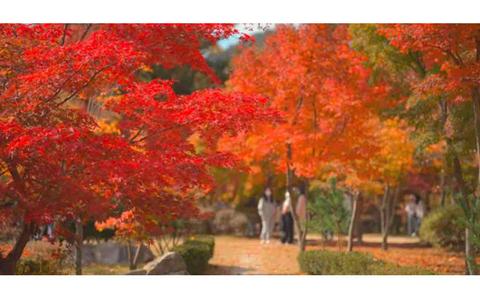South Korea is one of the most beautiful countries in the world. It has everything travelers are looking for. From fascinating sights to an amazing culture that stands out from any other region in the world, there is always something to discover on your trip to South Korea. Here are the 8 must-see tips for your next trip to South Korea.
1. Adopt public transport
South Korea has one of the most effective and extensive emissions control systems. public transport systems in the world. The subway and bus networks are not only extensive, but also affordable and easy to navigate. Tourists can purchase a T-money card, which can be used on buses, subways, taxis, and even some convenience stores. This card will save you time and money as you navigate the bustling streets of Seoul or explore the scenic landscapes of Busan.
When using public transportation, it is essential to respect local etiquette rules. For example, give up your seat to the elderly, pregnant women, and people with disabilities. South Koreans place great importance on respect and politeness, so a small gesture like this can go a long way in making your travel experience enjoyable. Also, try to avoid loud conversations or phone calls on public transportation, as maintaining a quiet environment is considered respectful.
2. Learn basic Korean phrases
Although many South Koreans, especially in larger cities, speak some English, learning basic Korean phrases can greatly enhance your travel experience. Simple greetings like “Annyeonghaseyo” (Hello) and “Kamsahamnida” (Thank you) can help you connect with locals and show respect for their culture.
It can also be very helpful to know how to ask for directions or order food in Korean. For example, “Eodi-e-yo?” means “Where is…?” and can be used to ask for directions. Additionally, having a translation app on your phone can be very helpful for navigating menus or communicating more complex needs.
3. Adapt to the climate
South Korea experiences a wide variety of climates depending on the region and season. Southern regions, such as Busan and Jeju Island, can be very hot and humid in the summer. In contrast, northern regions, such as Seoul and Pyeongchang, can be extremely cold in the winter. Packing accordingly is essential to ensure a comfortable trip.
For warm climates, consider bringing light clothing, cooling pajamasand a good sunscreen. In colder regions, thermal socksIt is essential to wear insulated jackets and layer your clothing. Also, keep an eye on the weather forecast before your trip and bring an umbrella or raincoat during the monsoon season, from June to September.
4. Enjoy Korean cuisine
Korean cuisine South Korea is known for its bold flavors and diverse cuisine. Be sure to try local specialties like kimchi, bulgogi (marinated beef), and bibimbap (rice mixed with vegetables and meat). Street food is also an integral part of Korean culinary culture. Visit night markets to savor delicacies like tteokbokki (spicy rice cakes), hotteok (sweet pancakes), and kimbap (seaweed rice rolls).
If you have dietary restrictions, South Korea can still accommodate your needs. Many restaurants offer vegetarian or vegan options, and there are halal-certified restaurants in major cities. However, it's always a good idea to learn the Korean terms for your dietary needs and communicate them clearly when ordering.
5. Respect culture and customs
South Korean culture is deeply rooted in respect and tradition. Bowing is a common greeting and a sign of respect, so practice a slight bow when meeting someone for the first time or when thanking them. When dining, it is polite to wait for the oldest person to start eating before you. Pouring drinks for others and receiving them with both hands is also a sign of respect.
Visiting temples and historical sites requires modest dress. Make sure your shoulders and knees are covered and be prepared to remove your shoes before entering certain places. Understanding and respecting these customs will enhance your experience and help you make a good impression on the locals.
6. Use mobile apps for convenience
South Korea is a very tech-savvy country and there are several mobile apps that can make your travel more convenient. Apps like KakaoMap or Naver Map are great for navigation, while Papago is great for translation. For transportation, KakaoTaxi is a reliable alternative to street taxis.
Additionally, many restaurants, cafes, and tourist attractions offer free Wi-Fi, making it easy to stay connected. Consider getting a local SIM card or portable Wi-Fi device to ensure you have access to the internet throughout your trip. This will help you navigate, communicate, and stay informed about your travel plans with ease.
7. Explore beyond Seoul
Although Seoul is a vibrant city with a lot to offer, South Korea has many other destinations worth exploring. Busanwith its beautiful beaches and seafood markets, offers a relaxed coastal vibe. Jeju Island is popular for its natural beauty, hiking trails, and unique attractions like the Manjanggul lava tube.
Gyeongju, nicknamed “the museum without walls,” is full of historical sites, including Bulguksa Temple and the Royal Tombs. Andong offers a glimpse into traditional Korean culture with its Hahoe Folk Village. Exploring these areas will give you a better understanding of South Korea’s diverse landscapes and cultural heritage.
8. Stay in touch with locals
Meeting locals can give you a unique insight into Korean culture and daily life. Joining local tours, taking cooking classes, or attending festivals are great ways to meet people and learn from their experiences. South Koreans are generally very friendly and welcoming towards foreigners.
Language exchange meetings are also popular and can be a fun way to improve your Korean while helping locals practice their English. Websites like Meetup or language exchange apps can help you find events and connect with locals. Developing these connections can make your trip more memorable and meaningful.



